About my work
This section is dedicated to early career researchers' work in Planetary Sciences. On this page, they can share their daily work experience as well as their participation in workshops, conferences, research stays...
Work experience 1
Maxime Maurice, PhD student at the German Aerospace Center, talks about his experience in organizing an international conference.
"From the 9th to the 11th of June Berlin hosted the 11th Low/Cost Planetary Mission conference at the Archenhold observatory. Along with other young scientists from DLR (German Aerospace Center) Berlin (which organized this conference), I was involved as a technical support and thus had the opportunity to experience it from the other side of the registration desk. Fortunately, the solid organisation prevented most of the "technical stress" and made it very comfortable both for us (the technical team) and for participants, which is worth being emphasized since it is the sort of thing you get much better "from the inside". I thus had the opportunity to assist to most of the talks, largely focused on proposals and concepts for up-coming low-cost planetary missions, which clearly appear as a sky-rocketing stake for all space agencies around the world (ESA, NASA, JAXA and Roscosmos where represented). Innovative concepts featuring ingeneering challenges to serve all aspects of planetary sciences (remote-sensing as well as landing or sample-returning) are now keypoints in spatial programs, as shown by the numerous missions that have already been led with reduced budget and timescales (like ESA's Venus Express) or aiming at developing new economical technologies (like JAXA's IKAROS)."
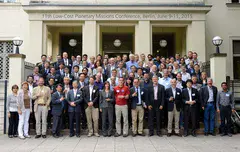
Work experience 2
Michaela Musilova, PhD research student at the University of Bristol, is studying life in extreme environments - including field trips to Greenland and (simulated) Martian environments!
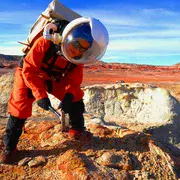
"My name is Michaela Musilova and I'm an astrobiologist studying everything from geology, biology to astrophysics in order to understand life in the Universe. Here I am as a "marsonaut" during a Martian simulation experiment trying to see what it would be like to live and work on Mars one day."
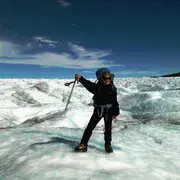
"My favourite part of studying life in extreme environments (extremophiles) is to become an extremophile myself. Studying these fascinating creatures means going on adventures to incredible and stunning places such as the glaciers in Greenland in this picture. Who wouldn't love an "office" such as this one? ;-)"
More information about Michaela's work here.
Work experience 3
Cyprien Verseux, PhD student at NASA Ames and the University of Rome II, speaks about his experience in participating in a one-year simulated Mars mission.
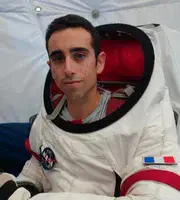 "Hey! My name is Cyprien Verseux, and I am a French astrobiologist. I am currently a PhD student co-directed by Lynn Rothschild, at NASA Ames, and Daniela Billi, at the University of Rome II. My work is focused on this: how to produce what you need on Mars from what is already there, using biological system. It is critical as launch costs do not allow for continuous resupply of human colonies on Mars. If we want to establish a permanent human presence there, we need to learn how to live "off the land".
"Hey! My name is Cyprien Verseux, and I am a French astrobiologist. I am currently a PhD student co-directed by Lynn Rothschild, at NASA Ames, and Daniela Billi, at the University of Rome II. My work is focused on this: how to produce what you need on Mars from what is already there, using biological system. It is critical as launch costs do not allow for continuous resupply of human colonies on Mars. If we want to establish a permanent human presence there, we need to learn how to live "off the land".
My research interests lead me to peculiar situations. Right now, for instance, I am writing from a white dome located at more than 2.5 km of altitude, on the slopes of the largest volcano of the planet. In a month I have never seen or talked to anyone besides the 5 other scientists leaving here, and I have never been exposed to the sun or fresh air. I am here for a year, as part of the HI-SEAS IV mission.
HI-SEAS IV is a simulation of a Mars mission lead by Kim Binsted, from the University of Hawaii at Manoa, and funded and co-organized by NASA. The main goal is to see how scientists perform in confined and isolated environments and to develop strategies to ensure that crew sent to Mars will remain sane and competent. So, we live as on Mars: we never go outside without spacesuit, communicate only via email and with a 20-minute delay in both directions, have in stock only shelf-stable food and spend most of our days doing research. Part of it is opportunistic studies where we are research subjects. We have to fill in surveys every day (6 at the very minimum), spend time in a virtual world using virtual reality glasses, take biological samples while performing specific tasks or on a regular basis, wear sensors, take cognition tests, train for various skills and perform geological studies. Among others.
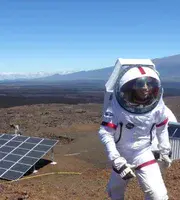
But other technologies developed for Mars exploration are also tested here, and we have our own research projects. One of my crew mates, for instance, works on how to 3-D print surgical tools and have crew members use them following instructions from a surgeon on the ground. Another one works on how to extract water from Martian soil. I am working on my usual research goal: how to produce resources for astronauts on Mars, from what is already there. I am also working with Petra Schwendner, another young astrobiologist, on documenting the dynamics of microbial communities in the habitat, among others to monitor the development of pathogens and surface-degrading micro-organisms."
More information about Cyprien's work on http://www.researchgate.net/publication/280490419_Sustainable_life_support_on_Mars__the_potential_roles_of_cyanobacteria
More information about HI-SEAS IV on http://walking-on-red-dust.com/contents/
Work experience 4
Baptiste Journaux, Post-doc at the University of Grenoble, talks about his experience of fieldworks on Alps glaciers.
"I'm Baptiste Journaux, Post-doc in Planetary Science and Glaciology at the Glaciology department of the University of Grenoble (LGGE- Université Grenoble Alpes, France). Most of my work is directed on the understanding of water ice physical properties (rheology, thermodynamics, etc.) using experimental science (creep tests, synchrotron experiments, etc...). But in the framework of my post-doc position on ice rheology, I have the opportunity to help colleagues to do fieldworks on Alps glaciers. The study of other planets interior dynamics, surface geology and general evolution greatly benefits of our knowledge on our own planet processes.
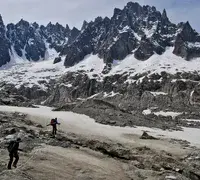 The goal is to monitor the effect of global warming on the mass balance of alpine glacier (how fast the glaciers are shrinking). Several technics are used like meteorological survey, LiDAR mapping, GPS, Radar topography, and here ice coring.
The goal is to monitor the effect of global warming on the mass balance of alpine glacier (how fast the glaciers are shrinking). Several technics are used like meteorological survey, LiDAR mapping, GPS, Radar topography, and here ice coring.
Snow cores provide, among other things (impurities type and chemistry, ice crystals microstructures, etc...), the amount of snow accumulation during the winter and so the mass gain of the glacier during that period. They are measured at the same period every year, at the exact same locations for the last 20 years for the french Alps (up to 40 years for one site). These unique and comprehensive dataset, available for the Alps, Andes and Antartica is provided by the international GLACIOCLIM project (GLACIers, un Observatoire du CLIMat) and is extremely precious to better parametrise climatic and glaciology models, like the one used by the IPCC (Intergovernmental Panel on Climate Change).
In the early years, these fieldworks implied to stay for few weeks between 2100m and 3500m of altitude (Alps), with issues related with fast changing weather conditions, difficult accessibility of certain high mountain zone, altitude sickness, and safe scientific instrumentation transport. Since few years this issues have been addressed by the use of helicopter drops that allow more flexibility, fast access to survey areas and the use of heavier coring equipment."
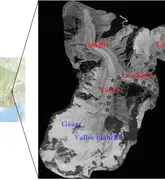
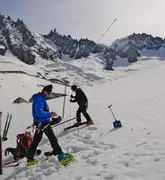
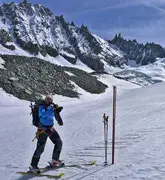
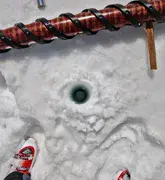
"The few pictures show here were took on the Talèfre, Leschaux and Tacul Glaciers in the Mont Blanc massif nearby the famous Chamonix Valley. The map represents the location of some of the snow cores (blue stars). Pictures illustrate some of the coring process, my two colleagues (Christian Vincent and Olivier Sanchez) and myself, and the beautiful fieldwork context of the Mont Blanc massif."
The institutions providing fundings and support for the GLACIOCLIM project (http://www-lgge.ujf-grenoble.fr/ServiceObs/) are INSU (Institut national des sciences de l'Univers), IRD (Institut de Recherche pour le Développement), IPEV (Institut polaire français), OSUG (Observatoire de Science de l'Univers de Grenoble), LGGE, WGMS (world glacier monitoring service).
